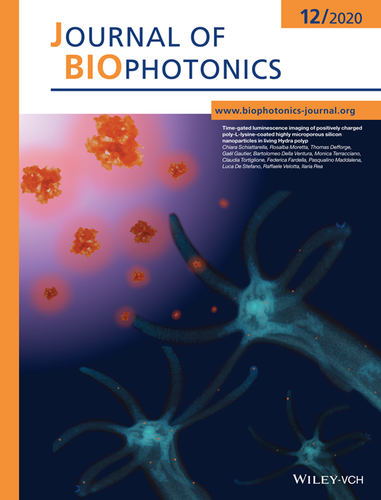Front Cover
Abstract
Poly-L-lysine-coated, highly microporous silicon nanoparticles are herein characterized and successfully used as longer-lived luminescent probes for in vivo time-gated imaging using Hydra vulgaris as model organism. The uptake in living polyp is promoted by the positive surface charge of the nanocomposite. The outcomes show that time gating allows to get rid of nonspecific tissue autofluorescence and leads to a contrast enhancement by a factor > 1 order of magnitude.
Further details can be found in the article by Chiara Schiattarella, Rosalba Moretta, Thomas Defforge, Gaël Gautier, et al. (e202000272).





